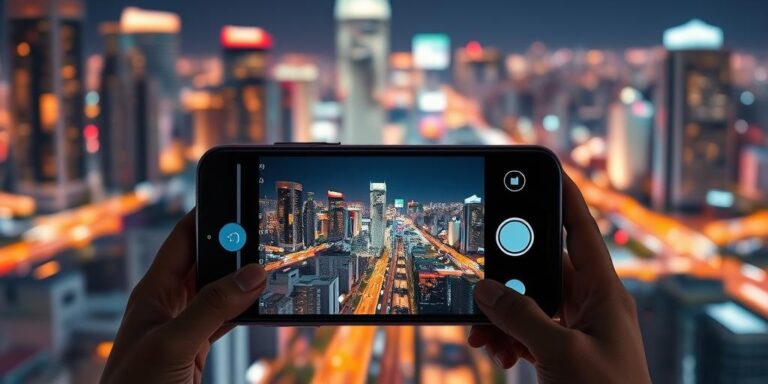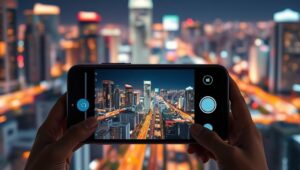The Future of Mobile Photography: Computational Imaging Advances (2025+)
The relentless march of technology continues to reshape our world, and few areas have experienced such dramatic transformation as mobile photography. As we look towards 2025 and beyond, the future of capturing moments on our smartphones is poised to be defined by computational imaging. This article explores the groundbreaking advances in computational imaging that will revolutionize mobile photography, enhancing image quality, expanding creative possibilities, and blurring the lines between reality and digital artistry.
What is Computational Imaging?
Computational imaging is a technique that goes beyond traditional photography’s reliance on optics and sensors. It combines sophisticated algorithms, artificial intelligence, and powerful processors to create images. Instead of merely recording light, computational imaging analyzes and manipulates it to produce richer, more detailed, and visually stunning results. This approach overcomes the physical limitations of small mobile phone lenses and sensors.
Key Advances Shaping Mobile Photography
1. Advanced HDR and Dynamic Range Optimization:
High Dynamic Range (HDR) photography is already a staple in modern smartphones, but future iterations will leverage AI to an unprecedented degree. Imagine capturing a scene with extreme contrasts – a bright sky against a dark foreground – and the phone intelligently balances the exposure in real-time, producing a perfectly exposed image without any manual adjustments. Advanced algorithms will analyze each pixel, optimizing its color and brightness based on contextual understanding of the scene.
2. Enhanced Low-Light Performance:
One of the persistent challenges in mobile photography has been capturing high-quality images in low-light conditions. Computational imaging is set to solve this problem with sophisticated noise reduction techniques and pixel binning algorithms. By merging data from multiple frames and using AI to fill in missing details, future smartphones will produce images that are bright, clear, and virtually noise-free, even in the darkest environments.
3. Super-Resolution and Zoom Capabilities:
Optical zoom is often limited in smartphones due to space constraints. Computational imaging offers a workaround through super-resolution techniques. By combining data from multiple shots taken at slightly different angles, algorithms can reconstruct a high-resolution image that surpasses the capabilities of the lens alone. This means users will be able to zoom in significantly without sacrificing image quality, bringing distant subjects into sharp focus.
4. Semantic Image Segmentation and Scene Understanding:
AI-powered semantic image segmentation will enable smartphones to understand the content of a scene at a granular level. The camera will identify different objects – people, trees, sky, buildings – and apply tailored processing techniques to each. For instance, it could enhance the textures of a landscape while smoothing out skin tones in a portrait, all automatically.
5. Computational Bokeh and Depth Control:
Creating a shallow depth of field, or ‘bokeh’ effect, has traditionally required large-aperture lenses. Computational imaging now allows smartphones to mimic this effect with remarkable accuracy. By analyzing the depth information in a scene, the camera can selectively blur the background, making the subject stand out. Users will also have the ability to adjust the depth of field after the photo has been taken, offering unprecedented creative control.
6. AI-Powered Image Enhancement and Editing:
The future of mobile photography includes AI-driven post-processing capabilities that can transform ordinary photos into masterpieces. These AI algorithms will intelligently adjust colors, enhance details, remove blemishes, and even suggest creative enhancements. Imagine an AI that can automatically convert a dull, overcast sky into a vibrant sunset, or add artistic effects that emulate famous painting styles.
Implications and Future Trends
The advancements in computational imaging have far-reaching implications. For consumers, it means higher-quality photos and videos with minimal effort. For professionals, it opens up new possibilities for mobile journalism, documentary filmmaking, and artistic expression.
Looking ahead, we can anticipate further integration of AI and machine learning, leading to even more sophisticated image processing techniques. Real-time image enhancement, personalized camera settings based on user preferences, and augmented reality applications that blend virtual elements seamlessly into the real world are all on the horizon.
Conclusion
The future of mobile photography is undeniably intertwined with computational imaging. As algorithms become more refined and processors become more powerful, our smartphones will evolve into sophisticated imaging tools capable of capturing and creating images that were once unimaginable. These advancements promise to democratize high-quality photography, empowering anyone to capture stunning visuals and express their creativity through the lens of their mobile device. By 2025 and beyond, the possibilities are truly limitless, heralding a new era of visual storytelling and artistic innovation.




